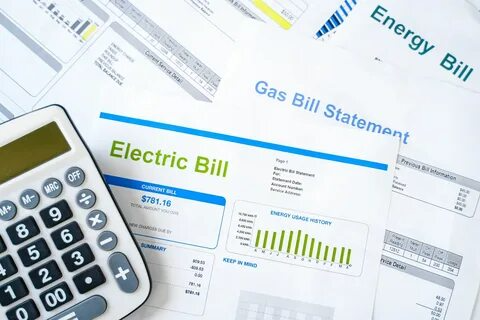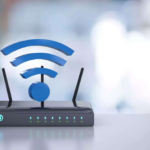Introduction
Electricity and water are two of the most essential utilities required for daily life. As urbanization increases and demand rises, effective billing systems have become critical for managing consumption, ensuring sustainability, and maintaining infrastructure.
Electricity and water billing systems are designed to calculate charges based on usage, encourage efficient consumption, and ensure timely payments. With advancements in technology, utility companies have adopted various billing mechanisms such as prepaid meters, smart meters, and online payment systems to enhance customer experience.
This document provides a comprehensive analysis of electricity and water billing, covering aspects such as billing methods, tariff structures, factors affecting consumption, digital billing innovations, and future trends in the utility sector.
1. Understanding Electricity & Water Billing
1.1 Electricity Billing
Electricity billing refers to the process through which power companies charge consumers based on their energy consumption. This involves reading meters, calculating charges, and issuing bills. The key components of an electricity bill include:
- Meter Reading: Measures electricity usage in kilowatt-hours (kWh).
- Tariff Structure: Defines the rates per unit of electricity consumed.
- Fixed Charges: Include service charges, maintenance fees, and taxes.
- Peak and Off-Peak Pricing: Higher charges may apply during peak hours.
- Subsidies & Discounts: Some regions offer incentives for energy-efficient usage.
- Penalties for Late Payment: Additional charges for overdue bills.
1.2 Water Billing
Water billing follows a similar structure, where consumers are charged based on the volume of water consumed, typically measured in cubic meters (m³) or gallons. A water bill includes:
- Metered Consumption: Water usage recorded via meters.
- Fixed Charges: Cover infrastructure maintenance and supply costs.
- Tariff Categories: Residential, commercial, and industrial rates vary.
- Sewerage and Drainage Fees: Additional charges in some regions.
- Conservation Charges: Encourages responsible water usage.
2. Billing Methods and Tariff Structures
2.1 Billing Methods
Utility companies employ various billing methods, such as:
- Flat Rate Billing: Fixed charge regardless of usage (less common today).
- Metered Billing: Charges based on actual consumption.
- Prepaid Billing: Consumers pay in advance for a set amount of usage.
- Postpaid Billing: Customers are billed at the end of the billing cycle.
- Time-of-Use (TOU) Billing: Different rates apply based on time slots.
2.2 Tariff Structures
Electricity and water tariffs depend on various factors, including:
- Residential vs. Commercial Rates: Businesses typically pay higher rates.
- Block Tariffs: Prices increase after crossing a consumption threshold.
- Seasonal Tariffs: Higher rates during periods of high demand.
- Lifeline Tariffs: Subsidized rates for low-income households.
3. Factors Affecting Electricity & Water Consumption
3.1 Electricity Consumption Factors
- Household Appliances: Energy-intensive devices increase consumption.
- Weather Conditions: Heating and cooling needs impact usage.
- Industrial & Commercial Demand: Factories and businesses use more electricity.
- Renewable Energy Adoption: Solar panels can reduce dependency on grid electricity.
3.2 Water Consumption Factors
- Population Growth: Higher demand leads to increased consumption.
- Climate & Rainfall Patterns: Dry seasons result in greater water usage.
- Irrigation & Agriculture: Farms consume large amounts of water.
- Industrial Usage: Manufacturing processes require significant water volumes.
4. Innovations in Billing Systems
4.1 Smart Meters
Smart meters provide real-time monitoring of electricity and water usage. Benefits include:
- Accurate Readings: Eliminates manual errors.
- Remote Monitoring: Consumers track usage via mobile apps.
- Demand Response: Helps manage peak loads efficiently.
4.2 Digital & Online Billing
The shift to digital billing has transformed utility payments:
- E-Bills & Notifications: Email/SMS alerts for bill payments.
- Auto-Pay Options: Reduces late payment penalties.
- Mobile Apps: Provides insights into consumption trends.
4.3 Prepaid & Pay-As-You-Go Systems
- Budget Control: Users pay only for what they consume.
- Improves Revenue Collection: Reduces unpaid bills.
5. Future Trends in Electricity & Water Billing
5.1 AI & Data Analytics in Billing
Artificial intelligence helps analyze consumption patterns, detect leaks, and optimize tariffs.
5.2 Blockchain for Transparent Billing
Blockchain technology ensures secure and transparent transactions in billing systems.
5.3 Smart Grid & Water Management Systems
Advancements in infrastructure improve efficiency, reduce wastage, and enhance service reliability.
Conclusion
Electricity and water billing are crucial aspects of utility management. With the advent of smart meters, digital billing, and AI-driven analytics, the sector is undergoing rapid transformation. Efficient billing practices not only improve revenue collection for utility providers but also encourage consumers to adopt sustainable practices. By embracing innovation and policy reforms, the future of electricity and water billing will be more transparent, efficient, and eco-friendly.

